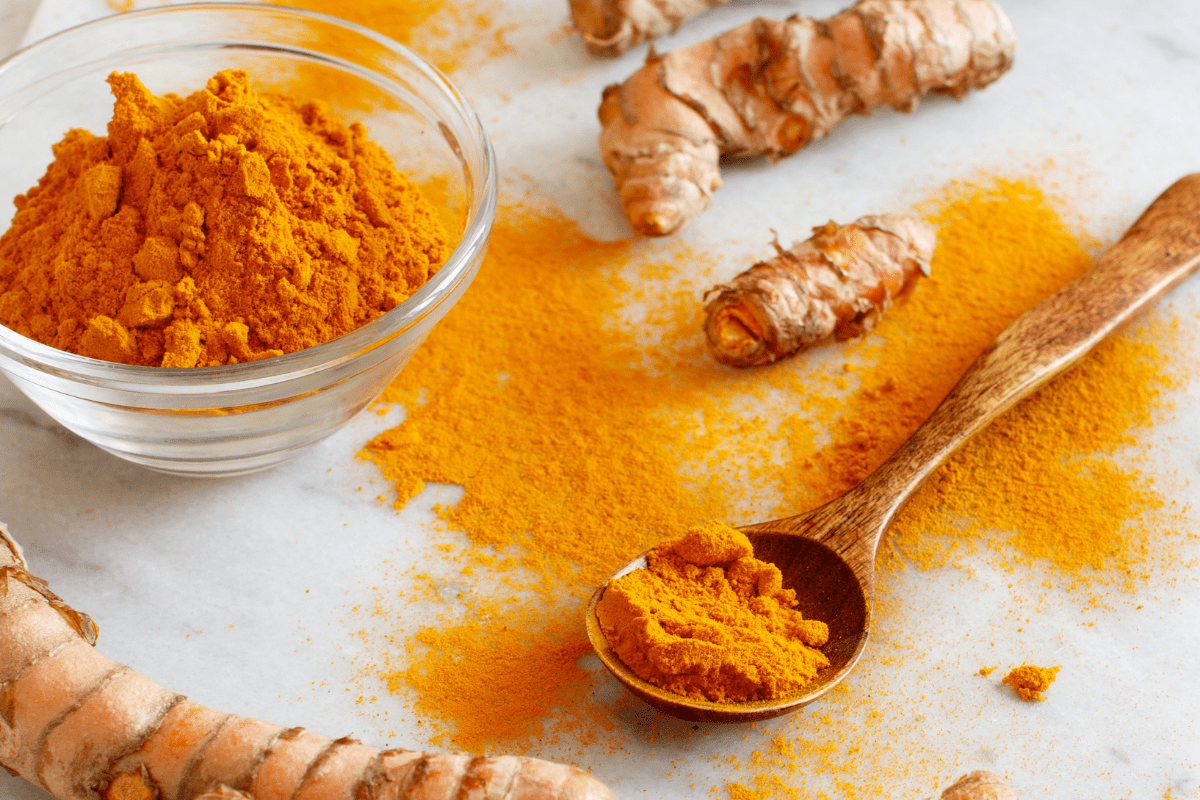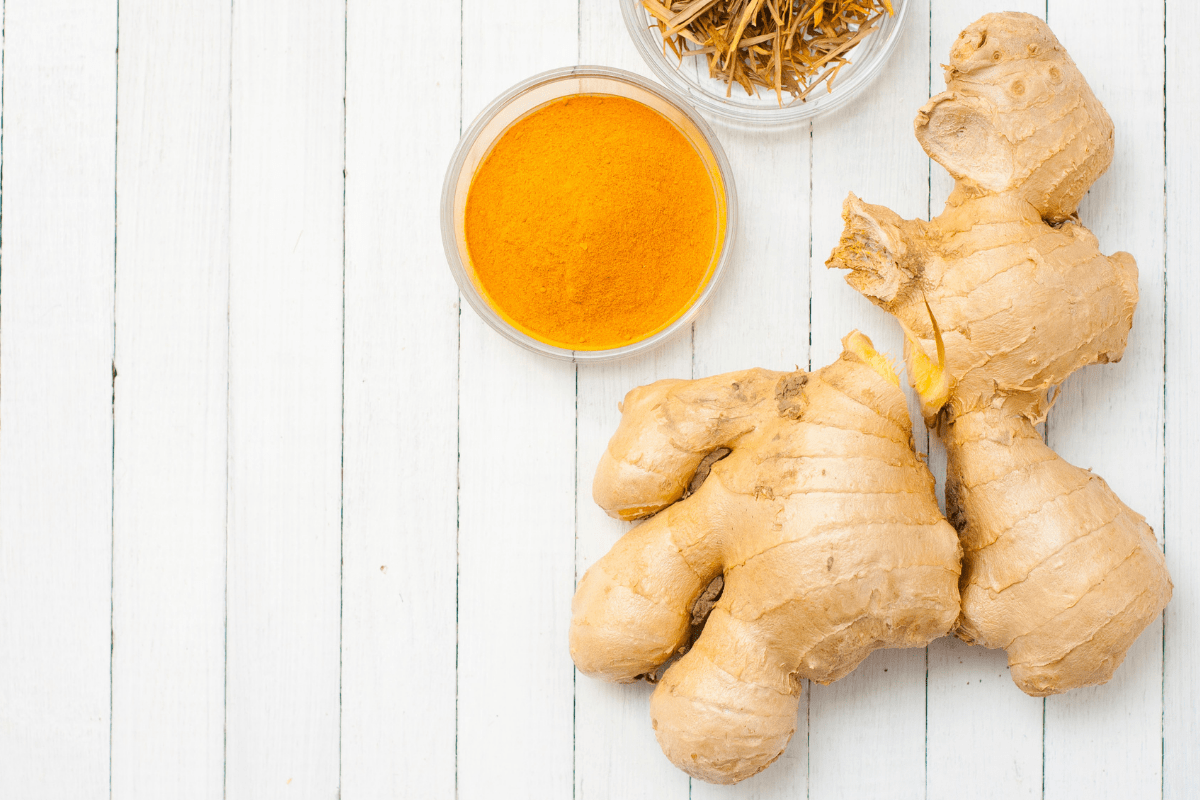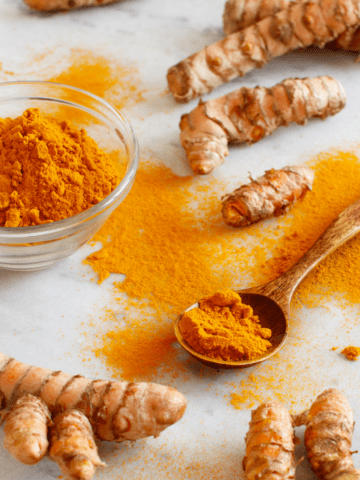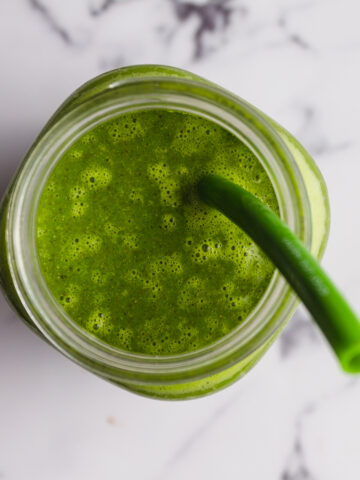You ran out in the middle of the recipe. You simply hate the flavour. You're allergic. Whatever the reason is that you're looking for turmeric substitutes, I've got you covered.

Jump to:
Turmeric has a pungent, earthy-sweet taste that can add a lot of flavour to a dish. But, surprisingly, it's also commonly added to recipes for colour rather than flavour. Just a dash of turmeric can turn a meal into a beautiful, vibrant yellow hue.
When looking for a turmeric substitute, you need to determine what role turmeric plays. If it's the hero of the dish, you'll either want to wait until you have turmeric or replace it with an ingredient that mimics its flavour profile. If it's added for colour, there are several ingredients you can use to imitate that yellow hue.
There are a lot of ingredients you can swap in that you probably already have in your kitchen. See the full list below.
1. Turmeric Powder
Turmeric powder can be used in place of fresh turmeric. For every 1 inch of fresh turmeric, substitute in 1 teaspoon of turmeric powder.
Similar to other herbs and spices, fresh turmeric will provide the most flavour. That said, if you don't have fresh turmeric, the best alternative is turmeric powder.
Furthermore, turmeric powder can be more convenient and significantly less messy, so it has its place too.
When purchasing turmeric powder:
- Ensure it’s high quality. Low quality turmeric powder has a strong, bitter taste that may turn you off this root altogether. It's often best to look at ethnic and specialty spice shops that have stock that turns over more quickly.

2. Turmeric Paste
Turmeric paste can be used in place of fresh turmeric. Use slightly more than the recipe calls for because it has a less intense flavour.
If you don't have fresh turmeric or turmeric powder, turmeric paste is your next best option. It will help maintain the flavour profile that your recipe is after.
That said, it can be tough to find at the grocery store. You'll have better luck purchasing it online or at a specialty grocery stores. This is one of my favourite brands of turmeric paste.
You can also make your own turmeric paste recipe that can be stored for up to two weeks in the refrigerator.

3. Saffron
Saffron can be used in place of turmeric to replicate the color. For every 1 teaspoon of turmeric, substitute in 1 large pinch of saffron.
Sometimes recipes include turmeric for colour rather than flavour. A small amount can transform a dish to a vibrant yellowish-orange colour. This is often the case in rice and soups.
If that's the goal of turmeric in your recipe, then saffron is a good substitute, which will provide a similar hue to your meal. Be careful not to add too much saffron because it has a sweet flavour that can overpower the dish.
Ingredient Note:
- Saffron has to be hand-harvested, which makes it an expensive spice to purchase. If you don't have it on hand already, you might want to go with another substitute or wait until you have turmeric on hand.

4. Ground ginger
Ground ginger can be used in place of turmeric in some recipes. Use the same amount of ground ginger as ground turmeric.
Ginger powder can be used as an alternative to turmeric in some recipes. It's best if you aren't particularly fond of the taste of turmeric.
Turmeric is a member of the ginger family, which means the two roots shares some health benefits and flavour properties. But they are not entirely the same. Turmeric has an earthy, mustard-like flavour, while ginger has a sweet and spicy flavour.
Ground ginger can work well as a turmeric substitute in smoothies and juices, but I would avoid using it in savoury recipes like curries and stews.

5. Madras curry powder
Madras curry powder can be used in place of turmeric. Because of its strong flavour, use a quantity slightly less than what's called for in the recipe.
Madras curry powder is made from a mixture of spices, including: turmeric powder, cumin, fenugreek and chilli powder. Because it includes turmeric, it will have some similar flavour notes. However, it will also add spiciness and transform the dish to a dark red hue.
It works well in Indian cuisine where cumin and fenugreek are popularly used as spices. For other recipes, this may not be the best alternative.

6. Yellow mustard seeds
Yellow mustard seeds can be used in place of turmeric. Because of their strong flavour, use a quantity slightly less than what's called for in the recipe.
Just like saffron, yellow mustard seeds can be substituted for turmeric when the dish is using turmeric for color. This is most common in rice, casseroles, soups, and marinades.
Ingredient note:
- Yellow mustard seeds are a spice. Do not use the condiment.
- The flavour is intense, so be careful how much you add to the dish.

7. Annatto seeds
Annatto seeds can be used in place of turmeric in a 1:1 ratio.
Similar to saffron and yellow mustard seeds, annatto seeds are a good turmeric substitute if you’re looking to imitate its color.
That said, the flavour of the annatto seed is fairly different from turmeric. Using annatto seeds will bring in sweet, peppery and nutty notes to your dish. So, only use this ingredient if you're comfortable with changing the flavour profile of the dish.
Ingredient note:
- To use annatto, you'll need to infuse it in oil at a 1:2 ratio. Here's how: mix ⅛ cup of annatto seeds in ¼ cup of oil. Stir and let sit until the orangish-red pigment shows up in the liquid.

8. Smoked paprika and mace
Smoked paprika and mace can be used in place of turmeric in a 1:1 ratio.
When combined just right, this combination of spices can taste quite similar to turmeric. That's thanks to the muskiness of the smoked paprika and the spiciness of mace. It's best used in savoury dishes, like curries, stews and rices.
The color of smoked paprika will also have an affect on the hue of your final dish much like turmeric. Although, it will turn out more red than yellow.

9. Ground cumin
Ground cumin be used in place of turmeric powder in a 1:1 ratio.
If you don't love the taste of turmeric, cumin seeds can be a good alternative. Like turmeric, they have an earthy taste. But, unlike ginger (another flavour alternative to turmeric), they won't add sweetness to the recipe.

10. No substitute
Before you begin swapping in one of the options above, ask yourself: is turmeric really essential to your recipe?
When you should just leave turmeric out:
- If it isn't a vital flavour in the dish
- If it isn't required in a large quantity
There isn't a perfect substitute for turmeric. Substituting one of the ingredients above may change the flavour of your final meal. If you're comfortable with this, swap away. If you're not, you may want to leave turmeric out altogether.

Summary
There are a number of reasons you might be looking for a turmeric substitute. From food intolerances to lack of availability to taste presences. Whatever the reason, you need to determine if a substitution is required. If you think it won’t hurt the recipe, then simply remove it.
If you need turmeric in your recipe, follow these guidelines for substituting:
- To imitate the color of turmeric use annatto seeds, yellow mustard seeds or saffron.
- To mimic the taste of fresh turmeric, use turmeric powder, turmeric paste or mace and smoked paprika.
- If you don't like the taste of turmeric, try ground ginger or ground cumin.
What is turmeric root?
- Turmeric is a root that is part of the ginger family and is often used in cooking.
- It has a pungent, earthy, sweet taste.
- Turmeric is often used for color in recipes. Actually, turmeric gives mustard its yellow hue.
- It is most often used as a dried and ground powder. This variety is less messy than fresh turmeric root. Be sure to purchase high quality powder.
- When purchasing fresh turmeric root, look for turmeric in the produce section of the grocery store, often placed near the ginger root. Choose a firm piece, avoiding soft, dried and shrivelled turmeric.
How to store turmeric
If you look around my blog, you’ll see that I am a fan of using fresh turmeric root in my recipes. It’s popularity in my kitchen is due to its anti-inflammatory properties and positive health benefits.
Because I buy this root in bulk, I needed to figure out how to properly store it so that I avoid food waste. I put together an article on the best ways to store turmeric. Check it out here.
How to use turmeric
I’ll share some of my favourite recipes using fresh turmeric below. But to make you the master of your own kitchen, I want to share a few ideas on how you can start using turmeric.
- Juices and smoothies. Turmeric root has an intense flavour that can add a kick to your beverage. Adding it to your beverages is a great way to get the anti-inflammatory health benefits daily. Check out my go-to turmeric smoothie or my immune-boosting turmeric juice shots.
- Homemade tea. Bring water and a chunk of turmeric root to boil on the stovetop. Reduce heat and simmer for 10 minutes. I also like to combine it with matcha for maximum benefits. Check out my matcha turmeric latte here.
- Golden milk latte. These have jumped in popularity over the last few years. You make them by blending plant-based milk with turmeric root, nutmeg and cinnamon. This is one of my favourite recipes.
- In cooking: While it's most popular in Indian cuisine, it’s also delicious to grate on roasted vegetables, add to soups, or in Mediterranean dips.
Is turmeric healthy?
Inflammation in response to injury or infection is a natural and helpful response within our body. It actually heals us.
But, inflammation can also happen in response to poor diet, lack of exercise, excessive stress and a deficiency in sleep. In these cases, our immune system is triggered to go into action, but it doesn't really have anything to fight.
This kind of inflammation in the body can contribute to a number of health issues like digestive issues, headaches and migraines, fatigue, brain fog and skin rashes. Over the long term, this inflammation can have even more damaging consequences, even damaging our arteries, organs and joints.
The good news is that your diet, sleep hygiene and workout routine matter a lot when it comes to reducing inflammation.
In regards to diet, a good place to start is to increase your frequency of foods that fight inflammation.
Turmeric is one of these foods. The curcumin in turmeric not only gives the spice its beautiful yellow color, but is also responsible for making it a powerful anti-inflammatory and antioxidant.
I want to hear from you!
Have you tried any of these subs for turmeric? Do you have any of your own? Please take a minute to leave a comment below with your suggestions.







Leave a comment!